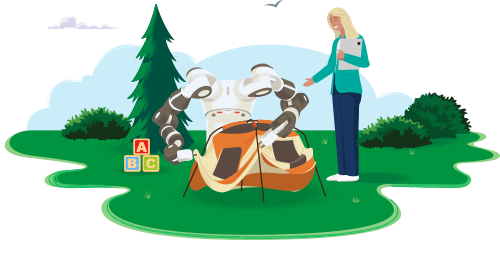Machine learning is a modern innovation that has enhanced many industrial and professional processes as well as our daily lives. It’s a subset of artificial intelligence (AI), which focuses on using statistical techniques to build intelligent computer systems to learn from available databases.
Marketing Cloud Demo
Automate and manage every campaign, publish content, analyse results, and optimise as you go.

With machine learning, computer systems can take all the customer data and utilise it. It operates on what’s been programmed while also adjusting to new conditions or changes. Algorithms adapt to data, developing behaviours that were not programmed in advance.
Learning to read and recognise context means a digital assistant could scan emails and extract the essential information. Inherent in this learning is the ability to make predictions about future customer behaviours. This helps you understand your customers more intimately and not just be responsive, but proactive.
Deep learning is a segment of machine learning. In essence, it’s an artificial neural network with three or more layers. Neural networks with only one layer can make estimated predictions. The addition of more layers can assist with increasing optimisation and accuracy.
Machine learning is relevant in many fields and industries, and has the capability to grow over time. Here are six real-life examples of how machine learning is being used.
1. Image recognition
Image recognition is a well-known and widespread example of machine learning in the real world. It can identify an object as a digital image, based on the intensity of the pixels in black and white images or colour images.
Real-world examples of image recognition:
- Label an x-ray as cancerous or not
- Assign a name to a photographed face (aka “tagging” on social media)
- Recognise handwriting by segmenting a single letter into smaller images
Machine learning is also frequently used for facial recognition within an image. Using a database of people, the system can identify commonalities and match them to faces. This is often used in law enforcement.
2. Speech recognition
Machine learning can translate speech into text. Certain software applications can convert live voice and recorded speech into a text file. The speech can be segmented by intensities on time-frequency bands as well.
Real-world examples of speech recognition:
- Voice search
- Voice dialling
- Appliance control
Some of the most common uses of speech recognition software are devices like Google Home or Amazon Alexa.
3. Medical diagnosis
Machine learning can help with the diagnosis of diseases. Many physicians use chatbots with speech recognition capabilities to discern patterns in symptoms.
Real-world examples for medical diagnosis:
- Assisting in formulating a diagnosis or recommending a treatment option
- Oncology and pathology use machine learning to recognise cancerous tissue
- Analyse bodily fluids
In the case of rare diseases, the joint use of facial recognition software and machine learning helps scan patient photos and identify phenotypes that correlate with rare genetic diseases.
4. Statistical arbitrage
Arbitrage is an automated trading strategy that’s used in finance to manage a large volume of securities. The strategy uses a trading algorithm to analyse a set of securities using economic variables and correlations.
Real-world examples of statistical arbitrage:
- Algorithmic trading which analyses a market microstructure
- Analyse large data sets
- Identify real-time arbitrage opportunities
Machine learning optimises the arbitrage strategy to enhance results.
5. Predictive analytics
Machine learning can classify available data into groups, which are then defined by rules set by analysts. When the classification is complete, the analysts can calculate the probability of a fault.
Real-world examples of predictive analytics:
- Predicting whether a transaction is fraudulent or legitimate
- Improve prediction systems to calculate the possibility of fault
Predictive analytics is one of the most promising examples of machine learning. It’s applicable for everything; from product development to real estate pricing.
6. Extraction
Machine learning can extract structured information from unstructured data. Organisations amass huge volumes of data from customers. A machine learning algorithm automates the process of annotating datasets for predictive analytics tools.
Real-world examples of extraction:
- Generate a model to predict vocal cord disorders
- Develop methods to prevent, diagnose, and treat the disorders
- Help physicians diagnose and treat problems quickly
Typically, these processes are tedious. But machine learning can track and extract information to obtain billions of data samples.
Machine learning in the future
Machine learning is a remarkable technology in the field of artificial intelligence. Even in its earliest uses, machine learning has already improved our daily lives and the future..
If you’re ready to apply machine learning to your business strategy and create customised experiences, check out the Personalisation Builder. Use the power of predictive analytics and modelling to understand each customer’s preferences!
Personalisation Builder
Use the power of predictive analytics and modeling to understand each customer’s preferences and automatically tailor content delivered in email and on the web.

Interested in artificial intelligence and how it’s affecting the global business landscape? Discover the benefits of AI for businesses in every industry.







